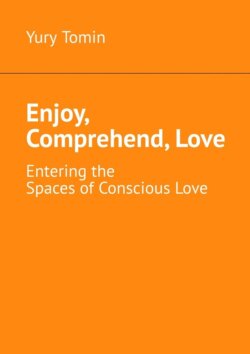Читать книгу Enjoy, Comprehend, Love. Entering the Spaces of Conscious Love - Yury Tomin - Страница 16
PSYCHOLOGY OF LOVE
Love as Self-Expansion
ОглавлениеIn the same 1986, along with the three-component theory of love by Sternberg, American psychologists Arthur Aron and Elaine Aron proposed the no less famous model of love as the self-expansion model (SEM). The idea arose at the junction of scientific research on the basic motives of human behavior in romantic relationships and classical ideas about love in Western (Plato) and Eastern philosophy (Upanishads), as the ultimate highest goal of human aspirations.
The SEM model was based on two psychological processes: the basic motivation of the individual to expand his own Self and the effect achieved in close relationships of including the other in the Self. Accordingly, in this model, love was defined as the desire to expand the Self by including the desired other in one’s own personality.
The motivation to expand the Self is associated with the universal need of a person to have great opportunities to achieve certain life goals (self-efficacy). The individual, according to the SEM concept, seeks to deepen his own understanding of himself through a new experience, expanding his worldview, acquiring new qualities, and thereby developing the Self as a given identity of the individual. Romantic relationships are formed under the influence of this motivation and, in the case of an ideal choice of a partner, they contribute to obtaining new resources (circle of acquaintances, social status, material resources, knowledge, etc.), ideas about the world, personality traits.
The SEM motivation should not be understood as a purposeful pursuit of benefits by establishing a close relationship with a specific person. The SEM model reflects the mechanism of involuntary mutual attraction of lovers at all stages of a romantic relationship. Moreover, it works both in the case of similarity of partners, and in the case of opposites. In the case of similarity, the lovers receive a positive assessment and support for their own self-image, which also includes the desire of the Self to new horizons. In the event of a difference in interests, the possibility of joining a radically new and expanding one’s own experience becomes a mutual attractive force.
The psychological effect of romantic relationships, consisting in the perception of the other as a part of one’s own Self, in the SEM model is the second basic principle, indicating the most accessible potential for expanding one’s own identity. Such a continuation of one’s own identity in another, however, can result in an almost complete replacement of one’s aspirations with the life guidelines of a loved one.
Anton Chekhov shrewdly told about this in the story Darling, touchingly describing the sincere love of the good-natured, compassionate young lady Olenka for her three men:
She repeated the thoughts of the vet and now had the same opinion of everything as he did. It was clear that she could not live without affection for one year and found her new happiness in her outbuilding <…> When guests came to him, his colleagues in the regiment, she, pouring tea or serving them supper, began to talk about the plague on cattle, about pearl disease, about city slaughter, but he was terribly embarrassed and when the guests left, grabbed her by the hand and hissed angrily:
– I asked you not to talk about what you do not understand! When we veterinarians talk among ourselves, please don’t interfere. It’s finally boring!
And she looked at him with amazement and anxiety and asked:
– Volodichka, what can I talk about?!
And she hugged him with tears in her eyes, begged him not to be angry, and both were happy.
Assessing the place of the SEM model in the psychology of love, the authors acknowledge its limitations and call for integration with other concepts of love relationships. It can also be noted that the reliance on the philosophical revelations of Plato and the Upanishads, claimed by the authors of the SEM model, remains only an effective declaration of intent. Academic psychology, forced to limit its constructions to measurable phenomena, is not yet able to describe the complex multifaceted processes of transformation of the Self in love.
Despite the criticism of the basic provisions of the model of love as an expansion of the Self, it offers original interpretations of some of the paradoxes of love. For example, high intensity of passion during the period of falling in love and its subsequent steady decline is associated not with the natural dynamics of emotions, but with the transition from a rapid expansion of the Self to a slowdown in the process due to the exhaustion of the potential for expansion in relations with a partner. From this, in particular, it follows that in order to maintain a more passionate relationship, couples should give preference to joint active, exciting, sparkling pastime over cozy relaxation and enjoyable activities.
For those who would like to determine to what extent the passion of his love or the love of his partner is associated with the motivation of expanding the Self, the Practices of Love appendix provides two questionnaires to measure the intensity of love and the degree of influence of the partner on the expansion of the Self.
